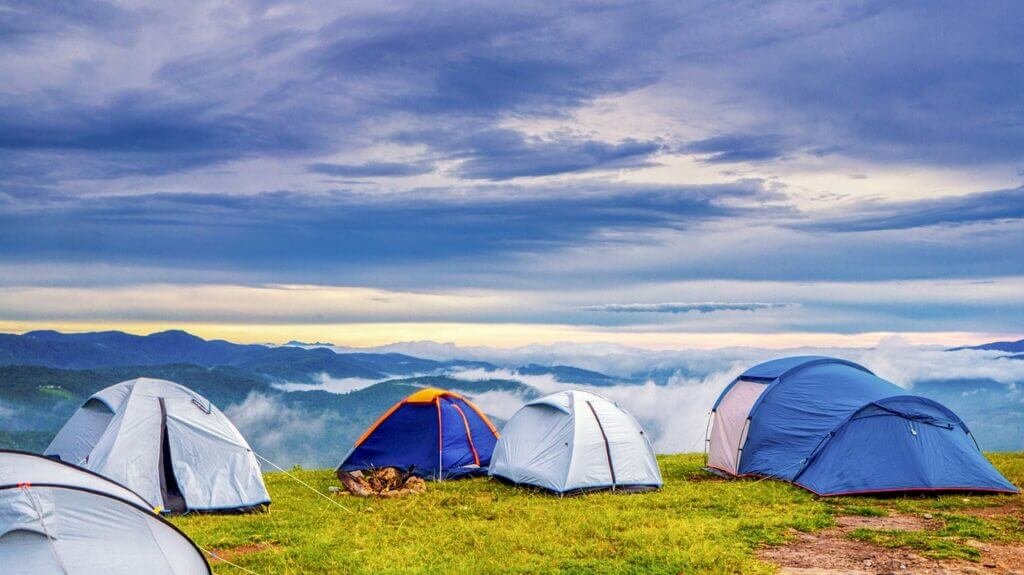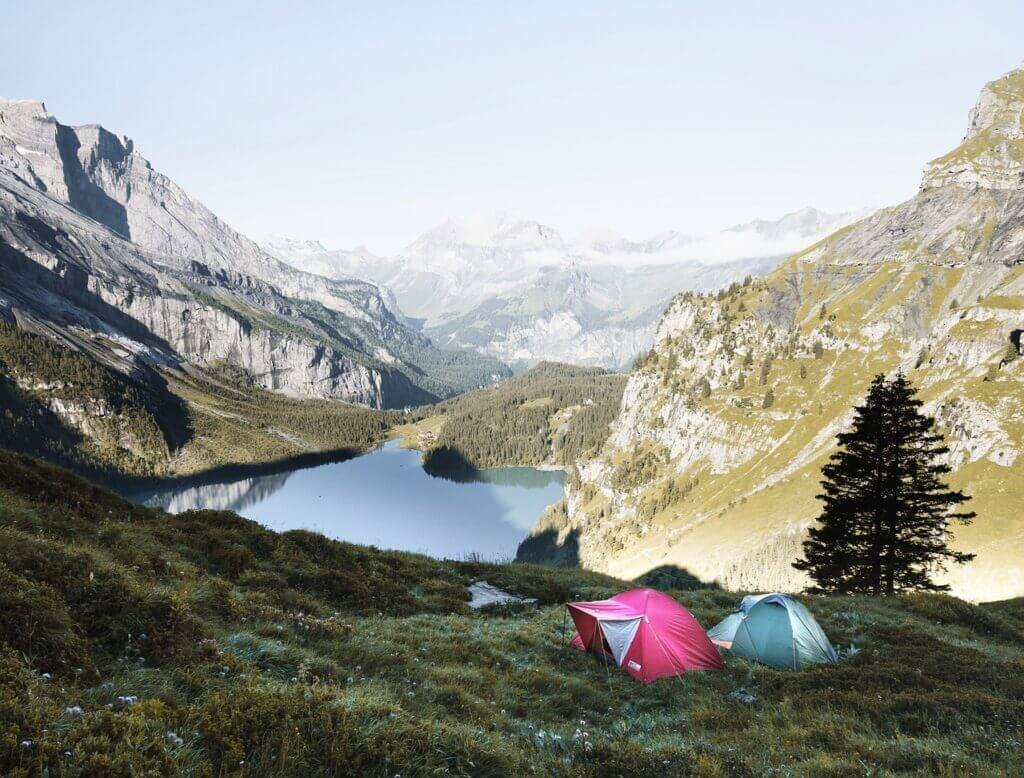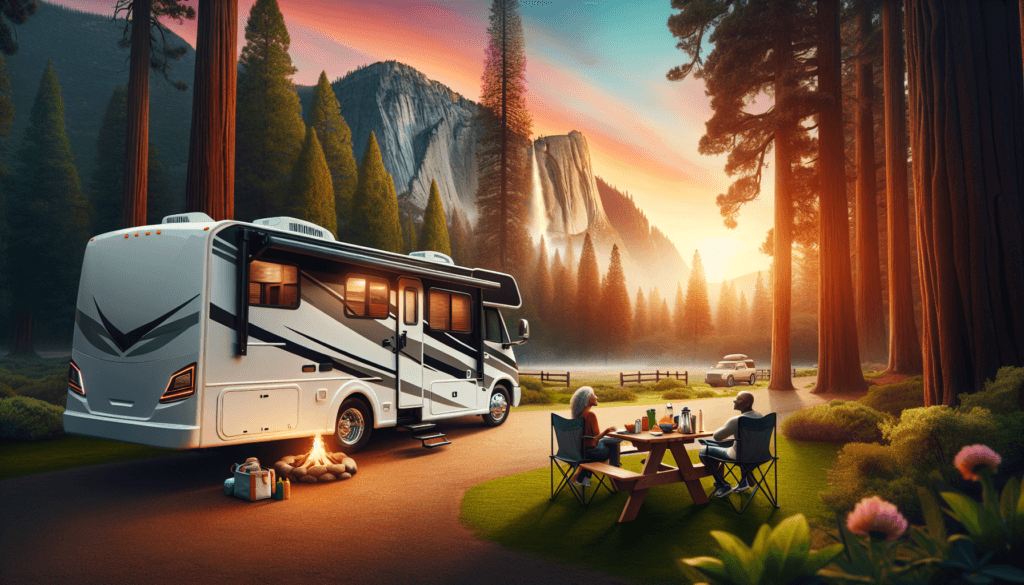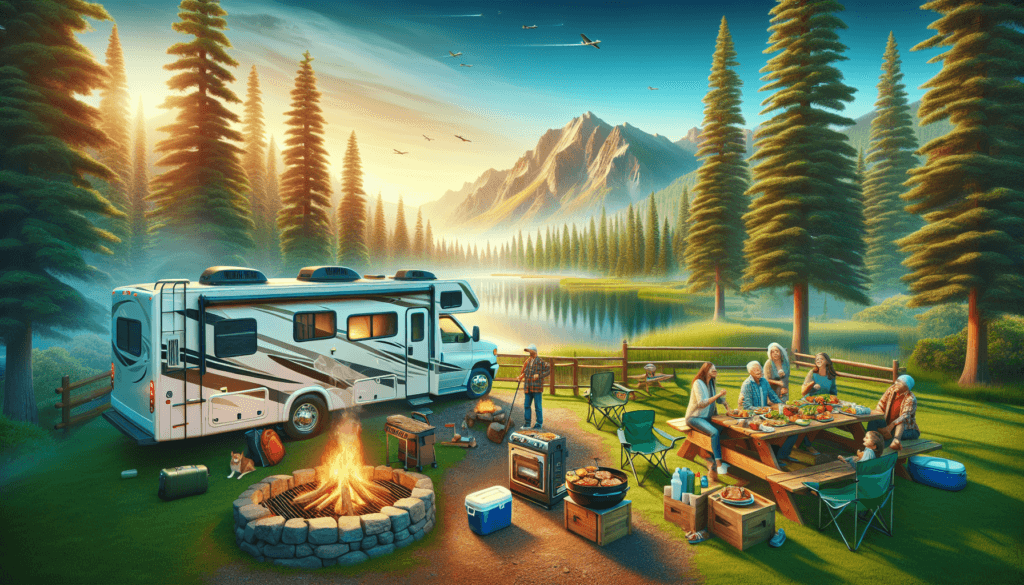Imagine embarking on a thrilling adventure in the great outdoors, where you can not only immerse yourself in nature’s beauty but also enjoy the convenience and comfort of your own mobile home. RV camping in national parks offers you the best of both worlds, allowing you to experience the breathtaking landscapes and wildlife up close, while enjoying the amenities and freedom of your recreational vehicle. However, before you hit the road, it’s essential to familiarize yourself with a few key aspects of RV camping in national parks to ensure a smooth and memorable journey. From reservation tips to park regulations, this article will provide you with all the necessary information to make the most out of your RV camping experience in national parks.

Choosing the Right RV
Consider the Size and Weight Restrictions
Choosing the right RV for your camping trip is essential, and one of the first factors to consider is the size and weight restrictions. Different national parks may have specific rules and regulations regarding the maximum length or weight of vehicles allowed. It’s crucial to check these restrictions before making a decision to ensure that your RV meets the park’s requirements. By doing so, you can prevent any potential issues or limitations when it comes to accessing and maneuvering within the park.
Check for Hookup Availability
Another important consideration when choosing an RV for your national park camping adventure is the availability of hookups. Hookups typically include amenities such as electricity, water, and sewer connections. While some national park campgrounds may offer full hookups, others may provide only partial hookups or none at all. Depending on your camping needs and preferences, it’s essential to determine whether hookups are necessary for your trip. This information can help you select an RV that has the appropriate amenities or plan accordingly if hookups are not available.
Ensure Adequate Storage Space
Storage space is another crucial factor to consider when choosing an RV for your national park camping trip. You will need enough room to store your camping gear, personal belongings, and supplies for the duration of your stay. Consider the number of people in your group and the various items you’ll need to bring along. Look for RVs with ample storage compartments, cabinets, and closets to ensure you have enough space to keep everything organized and easily accessible during your trip.
Understanding the Reservation System
Research the Reservation Options
Understanding the reservation system is essential to secure a campsite in a national park. Different parks may have their own reservation systems, and it’s important to research and familiarize yourself with the options available. Some parks may require reservations to be made well in advance, especially during peak seasons, while others may operate on a first-come, first-served basis. By knowing the reservation process for your chosen park, you can plan and book your campsite accordingly to ensure availability for your desired dates.
Know the Peak and Off-Peak Seasons
Knowing the peak and off-peak seasons of the national park you plan to visit is crucial when making reservations. Peak seasons are popular times for tourists, and campsites tend to fill up quickly, sometimes months in advance. Off-peak seasons, on the other hand, offer more availability and can provide a quieter and more peaceful camping experience. Consider your preferences for crowd levels and availability when deciding on the timing of your trip. Researching the peak and off-peak seasons can help you make informed decisions and increase your chances of securing a campsite.
Understand the Cancellation Policies
It’s important to familiarize yourself with the cancellation policies of the national park you plan to visit. Sometimes unexpected circumstances may arise, and you may need to cancel or modify your reservation. Knowing the park’s cancellation policies beforehand can help you understand any fees or restrictions associated with changes to your reservation. This knowledge allows you to plan accordingly and make any necessary adjustments without incurring any unnecessary costs.
Planning Ahead for Amenities
Check for Available Campsite Amenities
When planning your RV camping trip in a national park, it’s crucial to check for available campsite amenities. Different campgrounds within the park may offer varying amenities, such as picnic tables, fire pits, and access to potable water sources. Understanding the amenities provided at your chosen campsite can help you plan and prepare for your camping experience. For example, if the campground does not provide fire pits, you may need to bring your own or plan alternative cooking methods.
Look for Nearby Facilities
In addition to campsite amenities, it’s essential to consider the availability of nearby facilities. National parks often have visitor centers, restrooms, showers, and even laundry facilities located within or near the campgrounds. Checking for the availability of these facilities can help you determine what additional items or supplies you may need to bring for your trip. If there are no nearby facilities, you may need to plan on being self-sufficient during your stay.
Consider On-site Activities and Recreation
One of the advantages of RV camping in national parks is the access to various on-site activities and recreation. Many national parks offer hiking trails, biking paths, fishing spots, and wildlife viewing opportunities. Before choosing a campsite, research the on-site activities and recreation options available. This information can help you select a campsite that aligns with your desired activities and gives you the opportunity to fully enjoy the natural beauty and adventure that the national park has to offer.
Finding the Best Campsite
Research the Different Campgrounds
When it comes to finding the best campsite, it’s important to research the different campgrounds within the national park. Each campground may have unique features, such as proximity to attractions, access to hiking trails, or specific amenities. By researching the different campgrounds, you can choose the one that best suits your preferences and allows you to make the most of your RV camping experience.
Consider the Campground Accessibilities
Consider the accessibility of the campground before making your final decision. Some campgrounds may have steep or narrow roads, which can be challenging to navigate with a large RV. Ensure that the campground has suitable roads and parking spaces for your RV size. Additionally, if you have any specific accessibility needs, such as a wheelchair-friendly campsite or accessible restroom facilities, make sure to check if these accommodations are available.
Look for Scenic Views and Natural Features
Aesthetics and natural features play a significant role in creating a memorable camping experience. Look for campgrounds that offer picturesque views, whether it’s mountains, lakes, forests, or other scenic landscapes. Consider what type of natural features you enjoy, such as waterfalls, rock formations, or wildlife habitats. Researching the different campgrounds and their surrounding areas can help you choose a campsite that offers beautiful scenery and opportunities to immerse yourself in nature.

Preparing for the Trip
Create a Packing Checklist
To ensure a smooth and enjoyable RV camping trip, creating a packing checklist is essential. Make a comprehensive list of all the essential items you’ll need, such as camping gear, cooking utensils, clothing, toiletries, and food supplies. Include any specific items based on the amenities and facilities available at your chosen campsite. By using a checklist, you can organize your packing process, ensuring that you don’t forget any necessary items for a comfortable and convenient camping experience.
Check for Road and Weather Conditions
Before embarking on your RV camping trip, it’s important to check the road and weather conditions. National parks may experience adverse weather conditions such as heavy rain, snow, or extreme temperatures, which can impact road accessibility and safety. By staying updated on the weather forecast and road conditions, you can prepare accordingly and make informed decisions about when to travel and which routes to take. Remember that weather conditions can change rapidly, so it’s crucial to stay vigilant and flexible during your trip.
Plan for Food and Cooking
Food and cooking preparations are vital aspects of an RV camping trip. Consider the duration of your stay and plan your meals accordingly. Create a meal plan that accounts for breakfast, lunch, dinner, and snacks. Make a shopping list and ensure you have all the necessary ingredients and cooking utensils. If your campsite does not offer electricity or propane, you may need to bring alternative cooking methods such as a camp stove or portable grill. Planning ahead for food and cooking can help you avoid any last-minute stress and ensure you have delicious meals throughout your camping adventure.
Understanding RV Camping Rules and Regulations
Familiarize Yourself with Quiet Hours and Generator Usage
RV camping in national parks often comes with specific rules and regulations, including designated quiet hours and guidelines for generator usage. Quiet hours are periods during the day when campers are expected to minimize noise levels to ensure a peaceful environment for everyone. Additionally, some parks restrict generator usage during certain hours to minimize noise pollution and preserve the natural ambiance. Familiarize yourself with these rules to ensure a harmonious camping experience and respect for other campers.
Know the Rules for Campfires and Firewood
Campfires are a quintessential part of camping, but they must be enjoyed responsibly. Each national park may have its own rules and regulations regarding campfires and firewood. Some parks allow campfires only in designated fire pits, while others may prohibit them entirely during certain times or due to fire risks. It’s important to know the rules for your chosen national park to prevent any accidental damage and ensure the safety of both campers and the environment. Additionally, if firewood is not provided at the campsite, make arrangements to bring your own or purchase it from authorized vendors nearby.
Understand Pet Regulations
If you are planning to bring your furry friend along on your RV camping trip, it’s crucial to understand the pet regulations of the national park. Different parks may have varying rules regarding leash requirements, designated pet-friendly areas, and restrictions on certain trails or activities. Ensure that you are aware of these regulations and plan accordingly to create a safe and enjoyable experience for both your pet and other visitors. Always clean up after your pet and dispose of waste properly to maintain the cleanliness and integrity of the park.

Being a Responsible Camper
Practice Leave No Trace Principles
Being a responsible camper involves practicing Leave No Trace principles. These guidelines promote responsible outdoor ethics and aim to minimize human impact on the environment. Leave No Trace principles include leaving nature as you found it, disposing of waste properly, respecting wildlife and natural habitats, and staying on designated trails. By adhering to these principles, you help preserve the beauty of national parks and ensure that future generations can enjoy them as well.
Respect Wildlife and Nature
National parks are home to a diverse range of wildlife and natural ecosystems. It’s important to respect and admire wildlife from a distance, refraining from approaching, feeding, or disrupting their natural behaviors. Keep a safe distance and use binoculars or cameras to observe wildlife up-close. Additionally, avoid littering or leaving food out that may attract animals and compromise their natural behaviors. By respecting wildlife and nature, you contribute to the conservation efforts and help maintain the ecological balance within national parks.
Follow Proper Waste Disposal Protocols
Proper waste disposal is crucial when camping in national parks. Always utilize designated trash receptacles or recycling bins to dispose of your waste. If a trash bin is not available at your campsite, be prepared to pack out your trash and dispose of it properly once you have left the park. This includes not leaving any trace of food waste or personal items. By following proper waste disposal protocols, you contribute to the cleanliness and preservation of the national park’s natural environment.
Dealing with Limited Cell Signal and Connectivity
Prepare for Limited or No Cell Service
One aspect of RV camping in national parks is dealing with limited or no cell service. Once you enter the park, you may experience a significant decrease in cell signal and connectivity. It’s crucial to be prepared for this by informing family or friends about the potential communication limitations. Consider setting guidelines or establishing alternative communication methods, such as walkie-talkies or satellite phones. By being aware of the limited cell service, you can fully embrace the disconnect and enjoy the serenity of nature during your camping trip.
Seek Alternative Communication Options
While cell service may be limited, some national parks offer alternative communication options. Some visitor centers or campgrounds may provide Wi-Fi access, allowing you to briefly reconnect with the online world. However, it’s important to note that these options may have restrictions or limited bandwidth due to the remote nature of national parks. If staying connected is essential, research the available communication options specific to your chosen park and plan accordingly.
Utilize Offline Maps and Navigation Apps
Navigating through national parks can be challenging, especially without reliable cell signal or internet connectivity. To overcome this hurdle, consider utilizing offline maps and navigation apps. These apps allow you to download maps and directions to your device, enabling you to navigate without relying on real-time internet connectivity. Make sure to download the necessary maps and prepare your navigation tools before entering the national park to ensure a smooth and stress-free journey.

Navigating Through RV-Friendly Roads
Research the Road Conditions and Restrictions
Before hitting the road in your RV, research the road conditions and restrictions specific to your chosen national park. Some parks may have narrow or winding roads, low clearance bridges, or steep inclines that can be challenging to navigate for larger RVs. Familiarize yourself with any road restrictions, such as vehicle length or weight limits, to ensure you select the appropriate routes and avoid any potential accidents or damage to your RV.
Know the Height and Width of Your RV
Knowing the height and width of your RV is crucial to navigate through RV-friendly roads safely. Measure your RV and keep the dimensions in mind when planning your travel routes and selecting campsites. Large RVs may require wider roads and more spacious campsites to accommodate their size. By being aware of these measurements, you can choose roads and campgrounds that can comfortably accommodate your RV, ensuring a smooth and enjoyable journey.
Plan for Fuel Stops and Rest Areas
Long drives to national parks often require frequent fuel stops and rest areas. Before embarking on your RV camping trip, map out the fuel stations along your route and plan your stops accordingly. Some national parks may have limited fuel options or long stretches without rest areas, so it’s crucial to be prepared and ensure you have enough fuel and rest stops mapped out for your journey. By planning ahead, you can avoid any unnecessary stress or delays during your travels.
Staying Safe in National Parks
Be Aware of Potential Hazards and Dangers
While national parks offer breathtaking beauty and exciting adventures, it’s important to be aware of potential hazards and dangers. Each park may have its own unique risks, such as wildlife encounters, steep cliffs, or unpredictable weather conditions. Take the time to research and understand the potential risks associated with your chosen national park. By being aware, you can take necessary precautions and make informed decisions to ensure your safety and the safety of your fellow campers.
Prepare for Emergency Situations
No one wants to think about emergencies, but it’s crucial to be prepared for unexpected situations. When RV camping in national parks, it’s essential to have an emergency plan in place. Keep a first aid kit easily accessible and ensure it is well-stocked with essential supplies. Familiarize yourself with emergency exit routes and locations of the nearest medical facilities. Additionally, inform someone outside your camping group about your itinerary and expected return date. By being prepared for emergencies, you can face unexpected situations with confidence and ensure a safe camping trip.
Follow Park Ranger Guidelines
National park rangers are knowledgeable and experienced individuals who are there to ensure the safety and protection of visitors. It’s important to follow their guidelines and any instructions they provide. Park rangers can provide valuable information about specific park rules, hiking trail conditions, or potential safety concerns. By listening to and respecting the guidance of park rangers, you can have a safer and more fulfilling experience in the national park.
RV camping in national parks provides a unique opportunity to immerse yourself in the beauty and serenity of nature. By considering the various factors mentioned above, such as choosing the right RV, understanding the reservation system, planning ahead for amenities, finding the best campsite, preparing for the trip, understanding the rules and regulations, being a responsible camper, dealing with limited cell signal and connectivity, navigating through RV-friendly roads, and staying safe, you can ensure a memorable and enjoyable camping experience. Remember to respect and appreciate the environment, and leave no trace behind as you create lasting memories in the incredible national parks.



